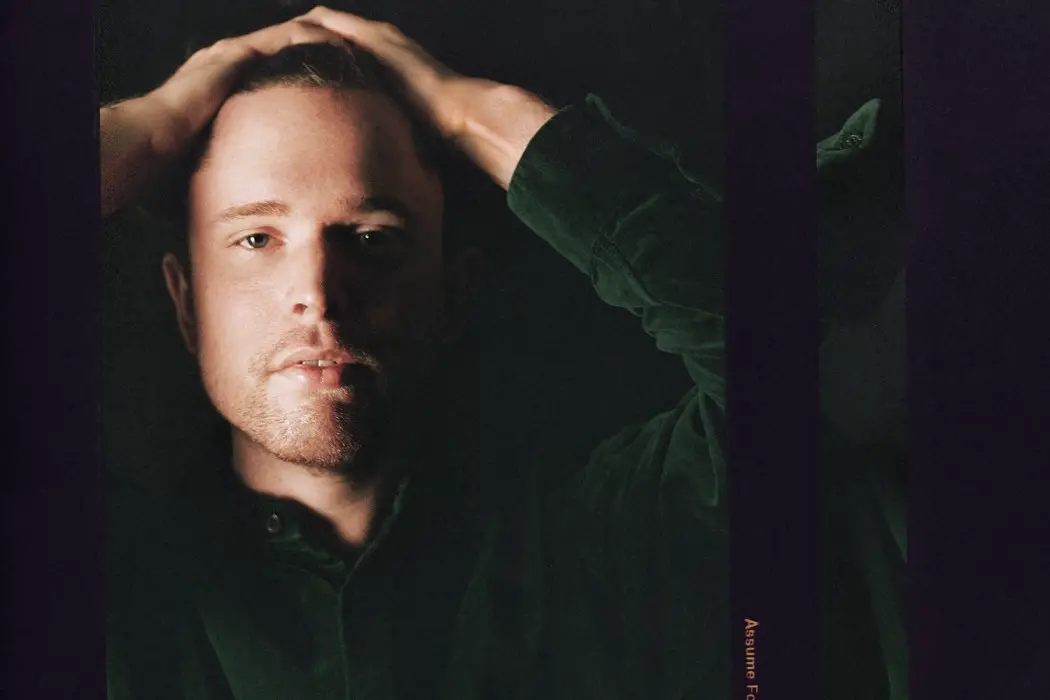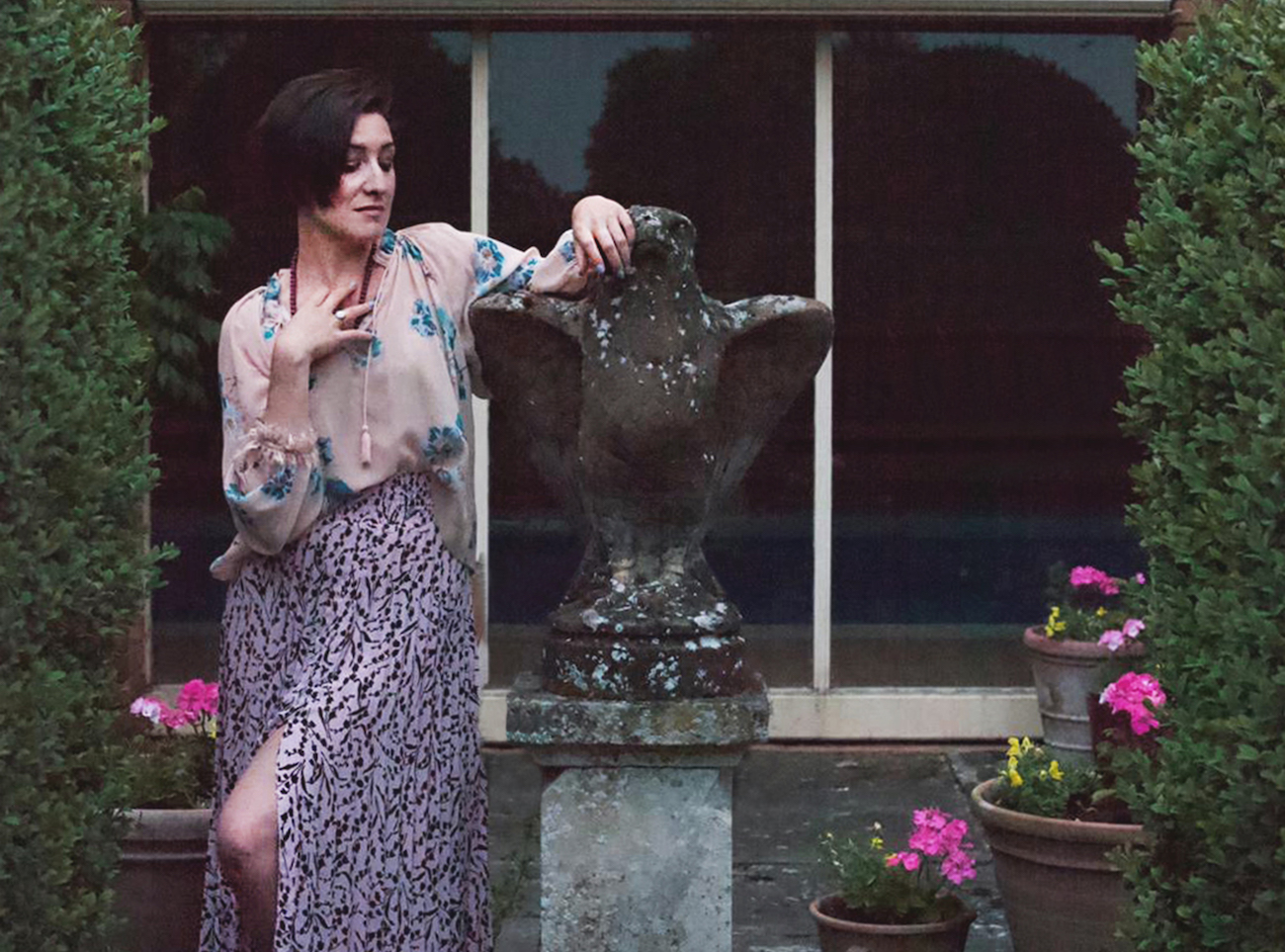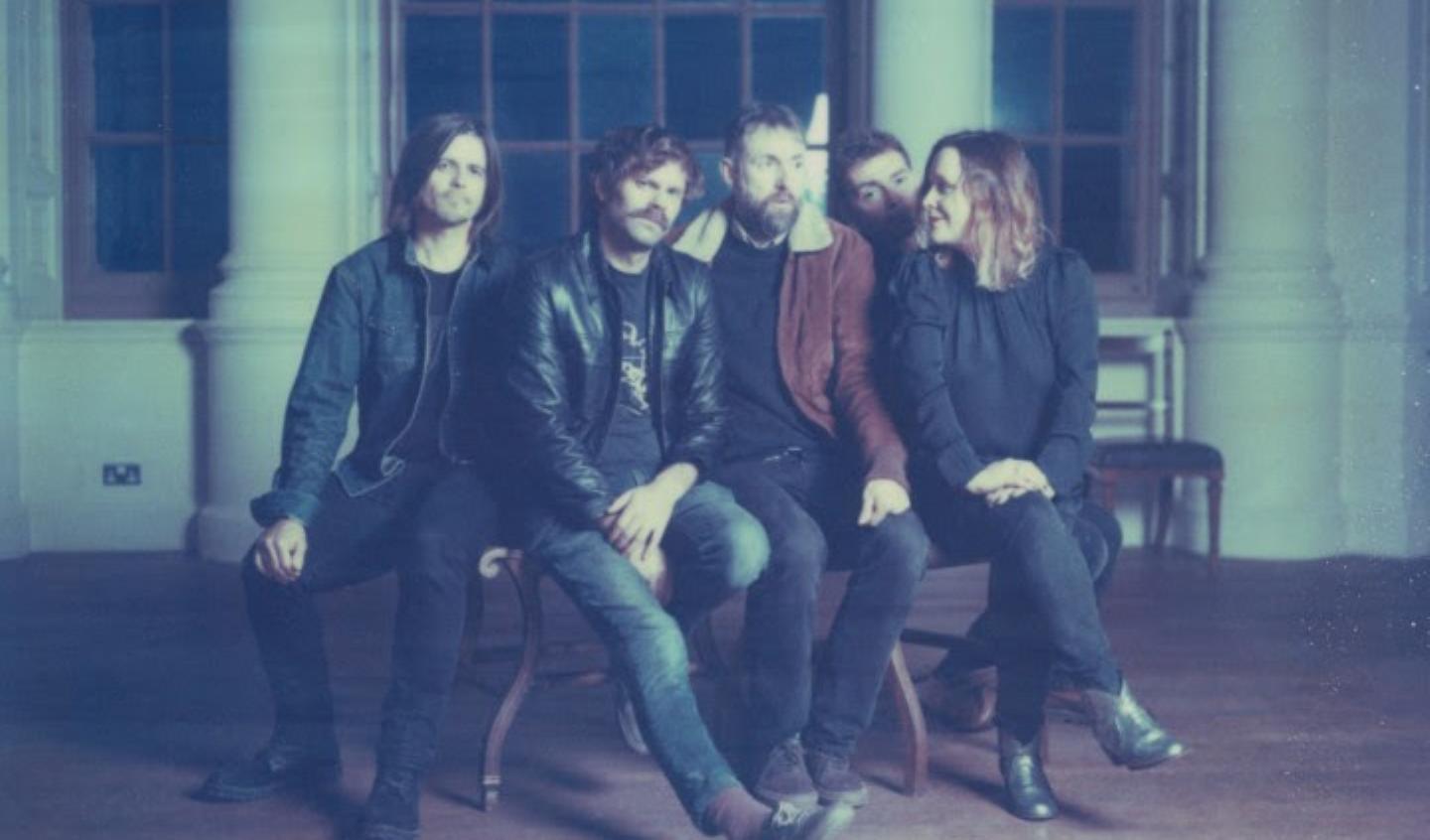Atwood Magazine’s writers discuss the complexities of James Blake’s fourth album Assume Form, its collaborative spirit, the evolution of Blake’s sound, and his unabashed happiness in love.
Featured here are writers Mariel Fechik, Carmen Chan, Shayna Chabrow, Coco Rich, Caitlin Ison, and Devin Stuzin

— —
How do you feel Assume Form works as a follow-up to 2016’s The Colour In Anything, as well as Blake’s previous albums?
Mariel: I’m a longtime fan of James Blake. His work has only gotten stronger as time has gone on, from his Chance the Rapper collaboration to his Grammy-nominated work on the Black Panther soundtrack. I absolutely loved The Colour In Anything, but already I can see a tightening of focus on Assume Form. Where Colour often felt like a study in theme and variation (“Love Me In Whatever Way” or “Put That Away and Talk to Me”), Assume Form feels more intentional and pointed. I adored the meandering piano ballads of Colour like “f.o.r.e.v.e.r.” and its title track, but I can also appreciate the less free-form Blake that Assume Form presents. As he says in a recent Washington Post interview, “‘Assume Form’ — it’s not a statement to say, ‘Here I am. I’m great now. I’ve made it.’ It’s more to say, ‘I’m still in the process. It is a process.’”
Carmen: I’m a big fan of James Blake as well, and I always seem to gravitate towards Overgrown whenever the temperature outside starts dropping. While Overgrown and his debut LP were more abstract overall in terms of subject matter, Assume Form feels more like a snapshot of his current frame of mind and where he is in his life, given that he’s explicitly stated in interviews and on twitter that the album revolves around his relationship with actress Jameela Jamil. Assume Form also comes across as more focused and pared down, clocking in at 48 minutes as opposed to The Colour in Anything, which was at times too meandering for my taste.
Many critics are positing that Assume Form marks a significant (and in one case, “mushy”) shift in Blake’s style. Do you agree?
Shayna: Last year James Blake aptly pointed out that the term “sad boy” was often used to describe him and he expressed his concern over it being an unhealthy and problematic expression used to describe men who talked openly about their feelings. As I wholeheartedly agree with his sentiment, I’d agree that Blake has made a shift in his tone to a more lighthearted theme but I wouldn’t describe it as “mushy.” His music has always felt sentimental but that shouldn’t be used to define him as an artist as he has many other layers to him, something that he’s manifested exponentially well on Assume Form. “I’ll Come Too” and “Can’t Believe The Way We Flow” are gorgeous songs that Blake uses to express his full submission to being in love but, tracks like “Power On,” “Where’s The Catch,” and “Don’t Miss It” indicate the selfishness, anxiety, depression, and paranoia that he’s had to overcome to get to that place.
Mariel: Blake has always been one of everyone’s favorite sadboys. His music aches and pulls (see his beautiful cover of Joni Mitchell’s “A Case of You,” which seemingly has no consistent time signature). He is a ghost that haunts his own songs. I feel that there is a shift here, and it’s that Blake sounds more grounded in himself. He’s less ghost, more corporeal – just like the album title and its titular track suggests. There’s so much love present in this album, and even in its quietest, most insecure moments, that love is palpable. (I also might just be a tad over-excited about James Blake dating Tahani Al-Jamil.) There’s an odd number of people I’ve seen seem slightly upset at this shift in Blake’s range of emotions, which presents an interesting view into how we often, as consumers, stake claims of ownership on an artist’s feelings. Like any human being, Blake is entitled to bare his soul in whatever way he chooses – it is his art, after all. And there is such a range here. The sadness and insecurity of his past albums burbles forward on songs like “Where’s the Catch?” and “Don’t Miss It,” as well as the question posed in track seven: “Are You In Love?” But there are moments of real contentedness as well, like the sloshy, Motown inspired “Can’t Believe The Way We Flow” and the sweetly nostalgic “I’ll Come Too.” He even takes on the role of protector in the gorgeous closing track, “Lullaby For My Insomniac.” It can be difficult to remove him from the moody, trenchcoat-ed figure from the cover of 2013’s Overgrown, but I think he deserves some moments of sweetness.
Coco: I think this album in particular is really obsessed with repetitions and patterns and structure and the lack thereof. There is so much cyclical imagery, particularly tied to songs that focus on mental health, that contrasts the linear implications of “form.” It’s this push and pull between following a path and continuing a pattern that makes the structure of the album so interesting. On the one hand, Blake is moving forward– he’s ready and telling people “what [he] keeps daydreaming of,” but on the other hand he, like many of us, is conscious of the potential to regress when depression/anxiety inevitably returns to sabotage the love he’s found and the life he’s living. Opening with the titular song “Assume Form,” Blake kicks off the album with a manifesto of sorts. “I will” statements, a focus on the future, are juxtaposed by “Doesn’t it?” questions, illuminating the cycle between self-assuredness and doubt. The melodic structure of the song is aware of the lyrical narrative and plays along by fluxing between major and minor melodic structures. I bring up this particular song because I think it encapsulates the album– the constant internal battle to join the external world in a way that feels fulfilling and genuine; assuming form means “being reachable,” “being touchable” and “connect[ing] motion to feeling.” I think assuming form, as Blake lays it out in the album, is an attainable goal, but not a sustainable goal as the cycle of self-assuredness and doubt is both an inevitable repeated pattern and a catalyst forward. Assume Form is far from “mushy” or “stagnant;” it suggests a way to live with, and grow with, depression instead of posing an idyllic escape from it or a surrender to it.
Carmen: In some ways, yes. It’s not like he picked up a guitar and started crooning lovesick ballads on this album, but the overall tone of the album has definitely shifted from cold to warm. A majority of the tracks on the album, especially in the second half, are actually songs that wouldn’t feel out of place being blasted on a warm summer’s day. The instrumental on “I’ll Come Too” (a sample of Bruno Nicolai’s “La Contessa, Incontro”) with its swelling strings, approaches romantic-movie levels of emotion. Whereas before, Blake was holding the listener at arms length and shrouding his songs in oblique imagery, on Assume Form his lyrics are personal and detailed. There are still dark moments here and there though, like his collaboration with André 3000 “Where’s the Catch?” with its paranoid lines and glitchy production that call back to his earlier work.
What is your favorite and least favorite song (or songs) and why?
Mariel: My favorite song has switched several times since over the many times I’ve listened to this album, but I think I’ve settled on two favorites: “Into The Red” and “I’ll Come Too.” There is something so simultaneously otherworldly and nostalgic about the sound of “I’ll Come Too.” The sample, as Carmen mentioned, is romantic and emotional – to me, it recalls the golden age of Hollywood – but Blake twists it by turning the sample into an ethereal, whirling background. Blake’s knack for melodies is undeniable, and “I’ll Come Too” has my favorite melodies on the whole album. He utilizes his vocal range in way that’s made the song addictive to me. He slips in and out of his falsetto with the most endearing voice cracks. “Into The Red” sounds like nothing he’s ever done before. Once again, the strings really get me. The synth throughout the song sounds like a synthetic banjo, which gives the song almost a bluegrass feeling at times. The beautiful harmonies and lyrics like “She was the gold rush” fill the song with warmth. I have to make one additional slot in my favorites list for “Lullaby For My Insomniac.” It’s a track that pretty much only James Blake could pull off – the huge, cathedral sound and the medieval sounding harmonies. It’s sweet, haunting, and effervescent. The perfect ending to an album.
Carmen: “Can’t Believe the Way We Flow” is hands down my favorite track off Assume Form. While some of the other songs took a while to grow on me, “Can’t Believe the Way We Flow” was the first track that really hit me upon listening to the album. The song samples The Manhattan’s “It Feels So Good To Be Loved So Bad,” bringing to mind similar tracks from the likes of Jamie xx, and Nicolas Jaar’s side project Against All Logic. I especially love the line “You are my fear of death,” which is such a strangely poetic way of expressing feelings of love. The exuberant production works synergistically with the soulfulness of his voice, resulting in his strongest attempt at a fairly traditional love song on the album. My least favorite track is “Into The Red.” The lyrics aren’t particularly captivating, and I find some of the synths, especially after the one minute mark, grating.
Shayna: I have more than one favorite song off of this album but the standouts that have stopped me in my tracks are “I’ll Come Too, “Where’s The Catch,” and “Into The Red.” The former is a beautiful, airy, track that makes the heart flutter, André 3000’s flow over Blake’s electronic production and tender piano in “Where’s The Catch” is impeccable, and the atmospheric change in the middle of “Into The Red” is stunning.
Caitlin: There are a ton of good songs on this album but one that really caught my attention during the first listen was “Into the Red” and “Barefoot in the Park.” Something about the two tracks felt so dreamy and airy to me; a true experience of escapism, which is one of the primary reasons I love Blake as an artist. I also love the subtle eeriness of “Lullaby For My Insomniac,” and thought it was a great way to close out the album. Although it’s a great song, “Mile High” is probably the one I cared the least about, primarily because I don’t listen to Travis Scott as much. The production on the track is great, but it didn’t stick out to me as much as the others did.
Assume Form finds Blake collaborating more than ever – Travis Scott, Moses Sumney, newcomer Rosalía, and André 3000 all make appearances. What do you think are the most successful features here?
Mariel: I am sort of in awe of how great these collaborations are. My least favorite is probably Travis Scott’s, mostly because I’m least familiar with his work and I feel like it’s a pretty standard trap sound. But I am obsessed with pretty much every other featured moment on Assume Form. As I’ve written before for Atwood, James Blake and Moses Sumney are the dream team I never knew I wanted. They are equally matched in unique artistic expression, and I will never get sick of hearing them together. I was also a huge fan of Rosalía’s 2018 debut, and her delicate voice is the perfect complement to Blake in “Barefoot In The Park.” And of course, who could deny another perfect feature from André? His verse adds amazing rhythmic interest to “Where’s The Catch,” which might be a bit of a dirge without it.
Devin: The surprising trap songs here work well within the framework of the album–the Travis-featuring ”Mile High” is a strangely bombastic single for such an understated album, but it is a perfect segue between “Assume Form” and “Tell Them.” Blake even drops some of his own bars after Travis’s verse, and he sounds genuinely comfortable rapping over Metro Boomin’s slapping drums. Rosalía’s appearance makes use of her lazer-precise voice in an astounding duet with Blake that proves her star-power just as much as his own. 3 Stacks stops by for some trademark rapid-fire bars on “Where’s The Catch,” nearly outpacing himself in the process. Generally speaking, the features fit like jigsaw puzzle pieces, but work best when Blake actively engages with his guests instead of letting them speak for themselves.
Carmen: It’s tough to pick just one favorite collaboration from the four, because I think some of the most compelling tracks on the album are the collaborations. Moses Sumney and Rosalía’s voices both blend surprisingly well with Blake’s, even though all three artists have such distinctive and dynamic voices. No one outshines the other in those two duets on the album. I think the production on “Barefoot In The Park” is slightly more interesting though, and it was fun to hear Rosalía sing in English and Blake sing in Spanish.
Shayna: Andreé 3000s is a clear staple of the album but “Tell Them” featuring Moses Sumney and Metro Boomin is one that successfully combines Boomin’s trap beats, with Sumney’s falsettos and man made acoustics, and the additional strings that Blake incorporated throughout it. We got a taste of Blake’s openness to working with hip hop artists when he collaborated with Ab-Soul and Anderson .Paak on “Bloody Waters” and Kendrick Lamar, Future, and Jay Rock on “King’s Dead,” both for the Black Panther soundtrack, and on Travis Scott’s Astroworld so it was pleasing to see him bring that newfound experience into his own album.
Caitlin: As I stated prior, “Barefoot in the Park” was one that stood out to me. The timbre in Blake and Rosalia’s voices work so well together, I think it was a brilliant choice to feature her on this particular song. I think another strong feature on the album is “Tell Them,” with Moses Sumney and Metro Boomin. Features can be tricky at times because the artists must really mesh well together, despite different styles, and I think they executed this perfectly here. The entire track sounds consistent, but still allows listeners to appreciate each artist’s craft.
What do you find to be the most compelling moment of production on Assume Form?
Mariel: I think the moment of production that caught me most off guard on this album was the introduction to “Barefoot In the Park.” The strange, bubbly effect over the harp (I think?) mixed with Rosalía’s pitched up voice is captivating. It continues under the vocal melodies, along with the subtle rhythmic array of drums, making for a beautifully lush bed for their perfectly blending voices.
Devin: The haunting doo-wop vocal loops of “Can’t Believe the Way We Flow” and the fluid howling on “I’ll Come Too” each find Blake composing some of his catchiest and most oblique melodies yet on top of sparse drums. Lead single “Don’t Miss It” is another track with a gorgeous and unpredictable melody–the back half of the album as a whole serves as compelling evidence for his mastery of memorable songwriting and delicate production.
Carmen: Honestly, I think the songs on Assume Form don’t quite reach the highs of some of Blake’s previous work. But it’s great that Blake is continually exploring new sounds, subjects, and collaborators. I do like the more overt sampling he used on the tracks “Can’t Believe the Way We Flow” and “I’ll Come Too.” If I had to narrow it down to one moment on the album, I’d pick the vocal loop running throughout the song “Don’t Miss It.” It’s haunting and really drew me in, and it reminds me of the vocal riff he used on “Retrograde.”
Shayna: As slow paced as James Blake’s previous works are, his live shows have always had a balance between making the audience feel relaxed and feeling like they’re in a London, underground nightclub. Assume Form gave just that balance in its production, especially on tracks like “Can’t Believe The Way We Flow,” “Power On,” and “Into The Red,” and that made it incredibly enjoyable to listen to.
Caitlin: Like my fellow writers, “Can’t Believe the Way We Flow” is one of those songs that are just so beautifully produced, it’s hard not to feel something when you’re listening to it. Blake’s voice is the icing on the song, pulling together a gorgeous melody throughout the entire track. I also really love the production on “Where’s the Catch?”; it goes well with Blake’s voice as well as Andre 3000’s verses. I’ll admit it’s not the most complex moment of production, but it is compelling to me with the way it flows so easily.
Another popular view among critics is that this album is more accessible than his past work. Stereogum says, “His other songs aren’t the sort of stuff that just reaches a mass audience on their own.” In this review, some of his past work is labeled “indulgent.” How do you interpret this emphasis on accessibility that seems to be very prevalent in today’s music criticism?
Mariel: Perhaps I was a little too leading when I wrote this question, but I read Stereogum’s review this morning and it rubbed me the wrong way. There seems to be this attitude among many music critics that accessibility should be the goal every artist aims for – and if their music is somehow operating outside of that framework, it’s too niche or too weird or somehow, it’s talking down to us all. When SZA made her label debut (and I do love CTRL), there seemed to be this sigh of relief from critics saying, “Finally, something of hers we can play on the radio.” It suggests that an artist has to bare their soul in its simplest terms to be taken seriously in the pop world. Our desire to identify with an artist’s art, in some cases, has made us lazy. We want someone to tell us how they’re feeling, plain and simple, as though we need obvious cues that a song is sad or about love. And to be clear, I don’t pin this on SZA. She made a beautiful album in a way that felt stylistically true to her. What bothers me is the reception.
I don’t believe than an artist needs to beat us over the head with cryptic lyrics or crazy time signature switches – but I wish the greatest compliment Assume Form was given wasn’t about its accessibility. Because to be honest, I don’t think it is that much more accessible. I know plenty of people who would hear this record and say, “This isn’t for me, it’s weird,” and that’s fine. To me, other than the exclusion of “Mile High” – which in my opinion is the weakest track here – this record still doesn’t sound like something that would get played on mainstream pop radio, and that’s okay.
Coco: I don’t really understand what “accessibility” means in the context of music. But I do think it believes, on some level, that quality of music is correlated to the quantity of listens– completely disregarding the fact that music is undeniably subjective. “Accessible” can be used as a guise for various orientations towards a song: meant as an insult (“the song is so bad it could be played on mainstream pop radio”), meant as a compliment (“the song is so good it could be played on mainstream pop radio”) or simply meant as a synonym for “mainstream pop”. But since when has deeming something subjective good or bad been an insightful way to analyze and think critically? Even in the case of the most mild implicit meaning (the one that does not assess quality), “accessible” as a synonym for the genre of mainstream pop, is unhelpful unless extrapolated on– why does it sound mainstream? What qualities, sounds, textures, rhythms etc. lead you to believe that? I’ve got to agree with Mariel: “I wish the greatest compliment Assume Form was given wasn’t about its accessibility.” Who cares about whether it is or is not accessible? Instead, let’s focus on the why and what that says about the album.
Carmen: The beauty of music and the many different genres that exist is the fact that there is something for everybody; what’s accessible to one person might be completely incomprehensible to somebody else. I don’t see a problem in an artist making music solely for themselves either, especially if they actively draw from their own perspectives, or use the creative process as means to express themselves in ways they wouldn’t be able to otherwise. Sure, this album might be Blake’s most appealing or mainstream in terms of production and subject matter, but that doesn’t necessarily guarantee radio airplay or chart-topping success. I doubt Blake was aiming for those metrics, or trying to make lowest common denominator music anyway. Additionally, I disagree with the statement that his older music wouldn’t reach a “mass audience” by itself. His music has spawned plenty of imitators, and led to collaborations with artists such as Beyoncé, Kendrick Lamar, and Frank Ocean.
Caitlin: This emphasis is an interesting take, because it sort of suggests that the purpose of an artist’s work is to share it with others, which I don’t believe is completely true. There’s no obligation for an artist to share their work, and I feel like putting that pressure on them may even disturb and tarnish the entire process. I would disagree and say that Assume Form is still something that “doesn’t reach a mass audience,” because it doesn’t sound like your typical mainstream music; however, that doesn’t diminish the quality or the popularity of the album. Many, many people know who Blake is and truly appreciate his work, though it is not as viral as pop music. His music may be shifting in certain ways, but it’s common in many artists to evolve their sound over time, whether that aligns with mainstream music or not.
— —
:: stream/purchase Assume Form here ::
— — — —

Connect with James Blake on
Facebook, Twitter, Instagram
Discover mroe music on Atwood Magazine
? © James Blake








